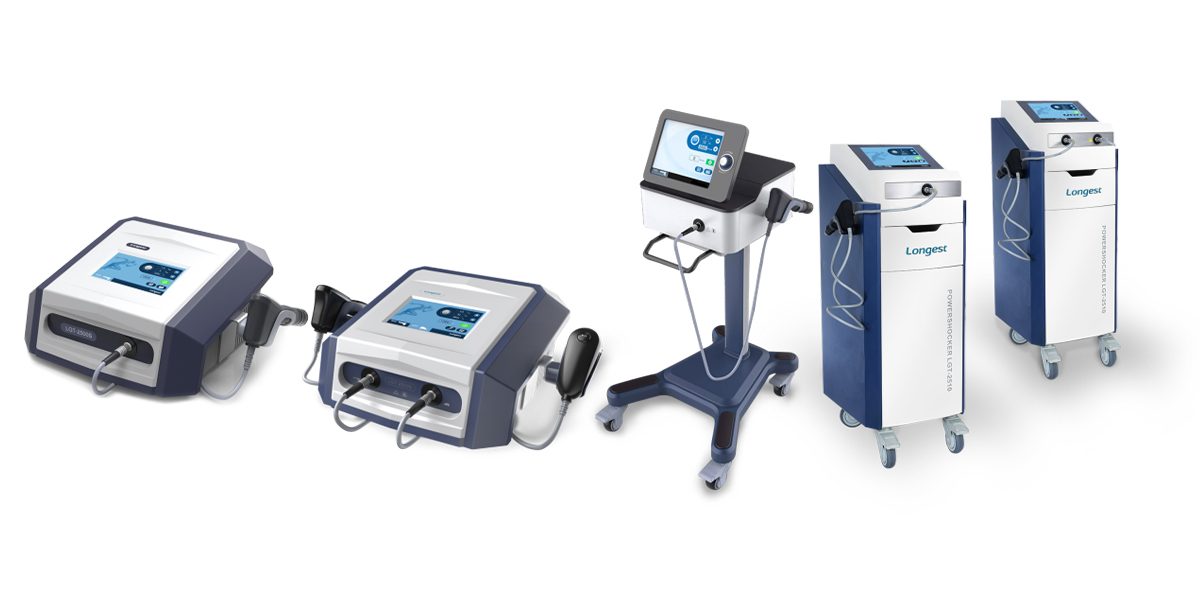
Shockwave therapy has gained popularity in recent years as an effective non-invasive treatment option for various musculoskeletal conditions. Two common types of shockwave therapy devices are focused and radial shockwave devices. While both can provide positive outcomes, they differ in terms of their applications and treatment approaches. This article aims to shed light on the differences between the two, helping you make an informed decision about which therapy device may be the most suitable for your needs.
Focused Shockwave Therapy

Focused shockwave therapy devices deliver highly focused, high-energy shockwaves to a specific target area. The energy is focused on a single point in the tissue, which allows for precise treatment of deep-seated musculoskeletal conditions. This therapy is commonly used for treating chronic conditions such as plantar fasciitis, Achilles tendinopathy, and calcific tendinitis, among others.
Advantages of Focused Shockwave Therapy
- Precise targeting: Focused shockwave therapy enables precise localization of the shockwaves to the affected area, minimizing unnecessary exposure to healthy tissues.
- Deep tissue penetration: Focused shockwaves can reach deeper structures, such as tendons and bones, allowing for effective treatment of conditions that require deep penetration for optimal healing.
- Customizable intensity: The intensity of the shockwaves can be adjusted according to the patient's specific needs, ensuring tailored treatment while maximizing therapeutic benefits.
- High success rates: Focused shockwave therapy has shown promising results in various clinical studies, with high success rates reported for several indications.
Limitations of Focused Shockwave Therapy
- Discomfort during treatment: Focused shockwaves can be intense and may cause discomfort during the application. However, local anaesthesia or numbing cream can be used to alleviate any pain or discomfort.
- Limited coverage area: Focused shockwave therapy's focused nature means that it may not be suitable for treating larger treatment areas or diffuse conditions that require broader coverage.
Radial Shockwave Therapy

Radial shockwave therapy devices deliver low to medium-energy shockwaves that spread outwards from the applicator tip, covering a wider treatment area. This therapy is typically used for more superficial musculoskeletal conditions, including tendinopathies, myofascial trigger points, and bursitis.
Advantages of Radial Shockwave Therapy
- Versatility: Radial shockwave therapy can be applied to different anatomical areas, including sensitive or hard-to-reach regions, due to its non-focused nature.
- Greater coverage: With radial shockwave therapy, a larger treatment area can be addressed during each session, making it suitable for treating diffuse conditions or larger muscle groups.
- Reduced discomfort: Radial shockwaves are generally less intense than focused shockwaves, resulting in a more comfortable treatment experience for patients.
- Shorter treatment duration: Radial shockwave therapy sessions tend to be faster compared to focused shockwave therapy due to the wider coverage area.
Limitations of Radial Shockwave Therapy
- Decreased depth penetration: Radial shockwaves have limited penetration into deep tissues, which may impact their effectiveness for certain conditions that require deeper treatment.
- Lower intensity: Radial shockwaves typically have lower energy levels than the focused counterpart, which might affect the treatment outcome for specific chronic or stubborn conditions.
How to Choose
When deciding between focused and radial shockwave therapy devices for a physical therapy clinic, several factors should be considered:
- Treatment Needs: Assess the types of conditions most commonly encountered in the clinic and determine which devices can effectively address those conditions.
- Patient Comfort: Consider the preferences and tolerance levels of your patients. Some individuals may prefer the milder treatment sensation provided by radial shockwave therapy.
- Clinic Budget: Evaluate the cost of each device, including maintenance and consumables, and ensure it aligns with the clinic's budget and long-term financial goals.
- Training and Expertise: Determine the level of training required for operating each device and ensure that staff members are adequately trained or are willing to undergo the necessary training.
Conclusion
Focused and radial shockwave therapy devices each have their own set of advantages and limitations. Focused shockwave therapy offers precise targeting and deep tissue penetration, making it ideal for chronic conditions and deep-seated injuries. On the other hand, radial shockwave therapy provides wider coverage, versatility, and reduced discomfort, making it a suitable option for superficial and diffuse conditions. Ultimately, understanding the benefits and considering the unique requirements of the clinic will lead to an informed decision that promotes better patient outcomes and clinic success.
LONGEST MEDICAL is a professional manufacturer of radial shockwave therapy devices with 24 years of experience. We provide a variety of high-performance, easy-to-use, and low-maintenance ESWT devices. Let us help you if you can not make the decision.



